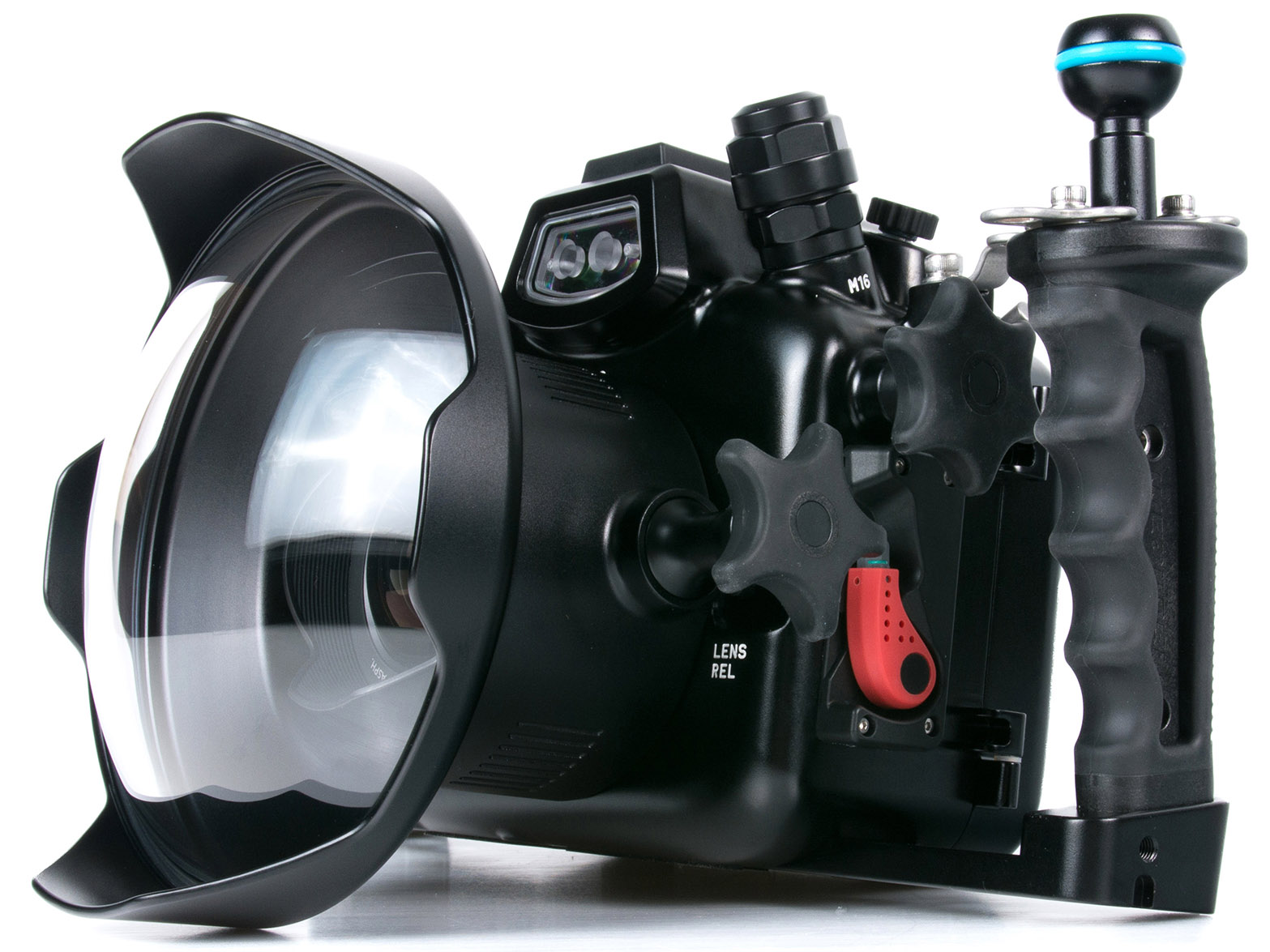 |
| The Nauticam WWL-1 Wet Wide Lens features a sharp 130° FOV. |
 The Olympus E-PL7 is a camera and small housing that we liked at first look, but was hampered by Olympus’s insistence that the small port that comes on it can’t be changed. It like all Olympus PEN housings can easily be changed - there’s a small set screw and the port just twists out on a bayonet. Zen and other third party ports for wide angle can then be used.
The Olympus E-PL7 is a camera and small housing that we liked at first look, but was hampered by Olympus’s insistence that the small port that comes on it can’t be changed. It like all Olympus PEN housings can easily be changed - there’s a small set screw and the port just twists out on a bayonet. Zen and other third party ports for wide angle can then be used. The Olympus PT-EP12 housing only supports the 14-42mm EZ electronic zoom “pancake” lens. Which is the lens that’s compatible with the Nauticam WWL-1 lens.
 |
| The Olympus 14-42mm EZ also is a nice fish portrait lens. |

I outfitted the PEN 7 system with a couple of Sea & Sea YS-D1 strobes along with two sets of 10Bar arm floats. The WWL is a heavy glass high quality lens. Out of water, it weighs about 3.8 pounds. In water, I’d guess less than 3 pounds. So some floats are necessary to make it more neutral. The four 10Bar arm floats worked out well, balancing it nicely.
On a recent short trip to Hawaii’s Big Island at Kona, I was able to take the rig on a couple of dives. I was hoping to find some big animals to try out it’s 130° field of view, but never saw them below water. But I had some fun on the reefs, tried a few general shots, and “herded” around a school of goatfish.
 |
| The Nauticam CMC Macro Converter lens is free of aberrations. |
But it depends on your perspective, I think someone upgrading from a compact camera would be quite pleased with it's sharpness and versatility.
Olympus never did make a zoom gear for the 14-42mm EZ lens, you have to do a quick button assignment to toggle the camera to zoom electronically using the left-right buttons on the back of the housing. This would work very nicely with full “zoom-through” focus from 14 to 42mm using the WWL lens.
The CMC also has a bayonet adapter which is very handy for it and the SMC; I’d say a “must-have” instead of trying to screw these lenses on and off. A flip holder from Nauticam or Saga is probably easier, but they are a bit expensive for some budgets and you can’t put a wide angle lens on them. The Nauticam bayonet is not compatible with other diopter lenses such as those from ReefNet and others that have a flat bottom.
On the same dive I tried switching it out the WWL wide lens with the CMC diopter for some macro shots. This means you need to park the 3 pound WWL lens on a Nauticam bayonet lens holder on an arm, which is not really the most balanced idea. It does work, but is quite awkward. I actually just laid it on a rock for a bit while shooting the macro CMC lens.
 |
| Unlike fixed macro lenses, you can zoom in and out with the 14-42mm EZ and CMC combination. |
So was this a setup I would recommend? Maybe, maybe not. Cost wise you are starting out pretty reasonably; $499 for the Olympus PEN E-PL7 and 14-42mm EZ lens, $759 for the housing. But you are adding on a $999 WWL and $320 CMC lens to the equation. But it’s still about $1000 or so less than a comparable E-M1 or E-M5 MKII and 8mm FE lens and Zen Port system. And more convenient - part of the savings is having to pack lenses and ports around.
 | |
| Macro and wide angle on a mirrorless camera - all on one dive! |
If you’re thinking about a smaller, mirrorless camera set-up, particularly if you want video with an electronic zoom capability, this would be a good, versatile, value-priced option indeed. — Jack Connick








